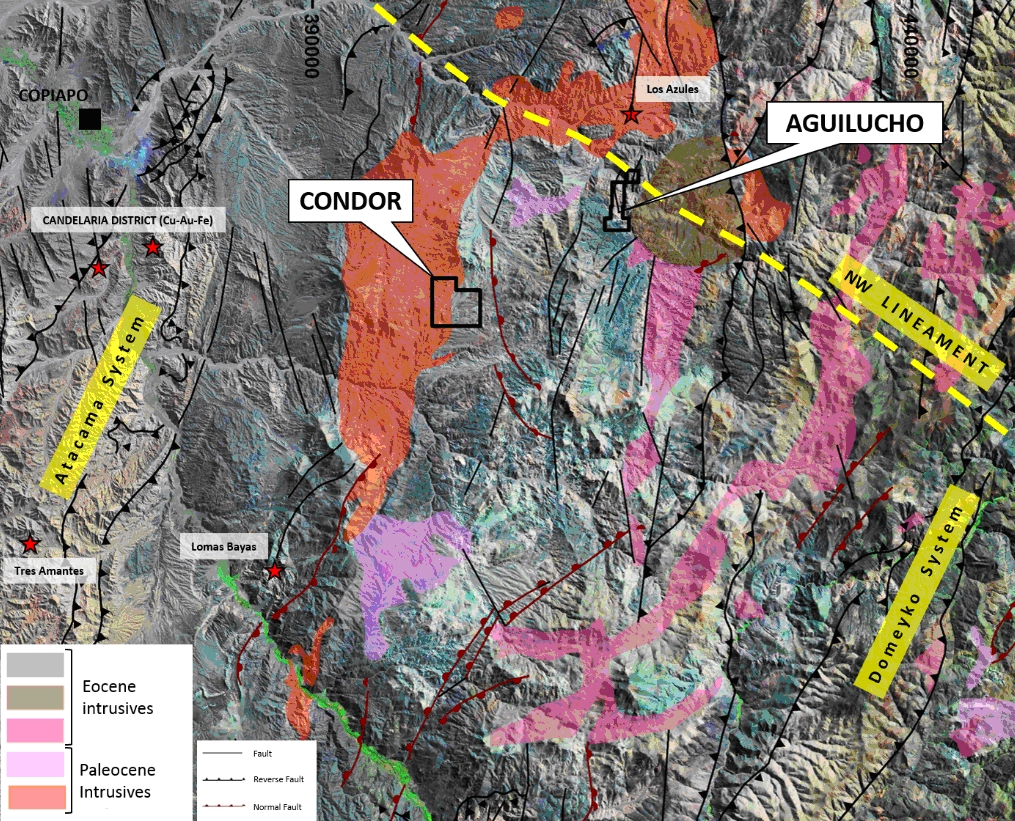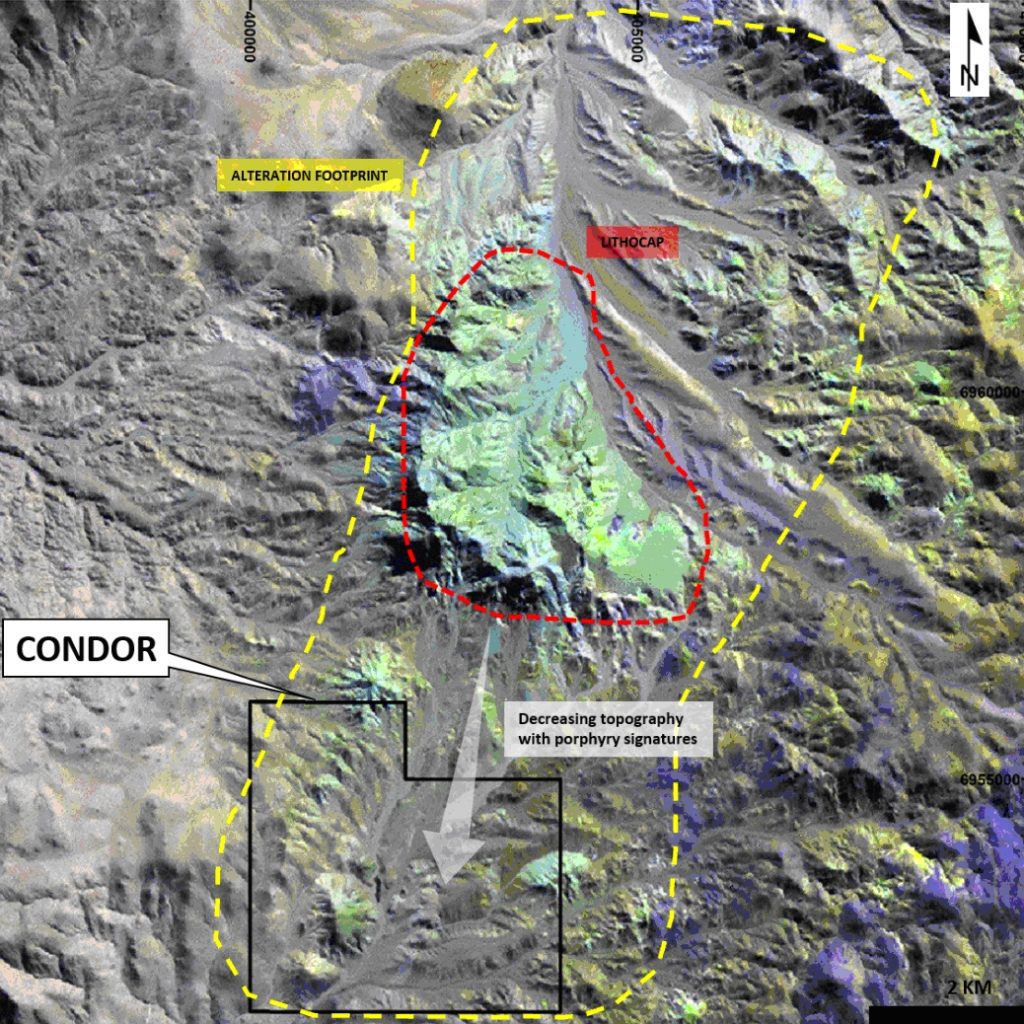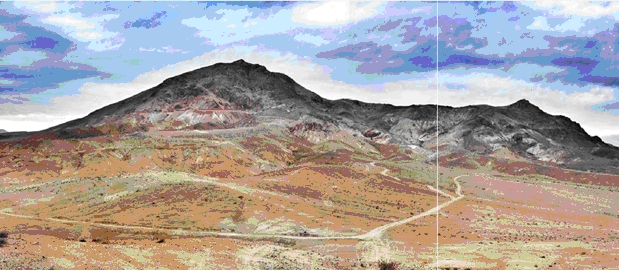Executive Summary
Condor is situated in one of the most productive gold and copper belts in Chile near Copiapó, a well-known mining city.The region is known for epithermal veins, porphyries and tourmaline breccias projects, and old mines. Condor presents the signature of a Cu-Au porphyry with epithermal mineralization in the lower sectors of an advanced argillic lithocap with kilometric extension.
Key points
- 55 km with good access roads from Copiapó city.
- Mining property. 1400 ha, 100% MASGLAS.
- Exploration stage. Early mapping and sampling.
- Exploration potential. Porphyry Cu-Mo-Au and Epithermal LS.
Location
Condor is located in the Atacama Region of northern Chile, almost 55 kilometers to the SE of Copiapó city.
Located over the southern extension of prominent Paleocene – Early Eocene belt, characterized at these latitudes of porphyry (Relincho), hydrothermal breccias (Los Azules/Cabeza de Vaca) and epithermal systems (Lomas Bayas Au-Ag). (See Figure 1)
In the point of view of the regional structural context Condor is placed between the Atacama and Domeyko fault systems. Like Aguilucho, the Condor project is between two old mining districts, to the south Lomas Bayas Au-Ag mine and Cabeza de Vaca district, to the north is the Los Azules copper project (MASGLAS America Corp.). A combined project between Goldcorp and Teck mines (El Morro 678Mt @ 0.35% Cu, 0.30 g/t Au; and Relincho, 1239Mt @ 0.37% Cu, 0.017ppm Mo) is 100 kilometers to the North from the Corridor project

Mining Property
The mining claims block in Condor comprise 1400 ha of exploration claims, 100% owned by MASGLAS.
Geology
The Cretaceous basaltic rocks from Hornitos Formation (80-65 Ma) represent the older rocks around the project. Intruding those Cretaceous volcanics are the Paleocene granodiorites of Plutón Cabeza de Vaca (63‐58 Ma), and culminating this magmatic event Dacitic porphyries and volcanics of Paleocene to early Eocene age (62-53 Ma).
Condor covers the southern sector of an important alteration footprint of 10 x 5 kilometers of extension. The hydrothermal alteration affected Cretaceous and Paleocene rocks with silica-clay and sericite-chlorite associations in Condor. Tourmaline breccias and quartz veins are the main mineralization in the project. (See Figures 2 and 3)


